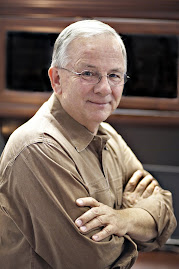
Contrary to popular belief, effective leaders are not hard-nosed, cigar-chomping, commandeering, uncaring, individualistic, take-charge, lone wolves.
Rather – effective leaders are interdependent.
As a leader you are totally and dynamically reliant upon God and your fellow human beings for your well-being and continued existence. Nonetheless, you remain irreducibly distinctive, independent, and irreplaceable with even greater individual capacity, influence, and significance, finding the center of your existence and significance in God and others.
Occasionally, there have been leadership models that recognize that people are something more than programmable machines – that acknowledge that people, in fact, can think, reason, and are capable of judging for themselves – that it is not necessary for them to check their thoughts, ideas, and feeling at the door when they arrive for work – and that they don’t have to leave at the end of the day feeling like they have been treated like a number, or worse yet, a machine.
James Clawson's book, Level Three Leadership: Getting Below the Surface,[i] is an encouraging step forward. Clawson argues that effective leadership must recognize that people are much more than programmable machines. People have an intricately developed, personal set of values, assumptions, beliefs, and expectations (VABEs). Workers do not check their VABEs at the door when they arrive at the workplace. People, just like you and me, use their world and life views – their conceptual frameworks – to observe, describe, interpret, and make decisions about the world around them – and then act accordingly. Clawson argues that there must be a moral foundation to leadership that consists of four cornerstones: truth-telling, promise-keeping, fairness, and respect for each individual.
What a remarkable leap from the mechanical and dehumanizing approaches to leadership still prevalent in the 21st century!
But there's more. In the words popularized by the cooking icon, Emeril Lagasse, “Let’s kick it up a notch!” Let’s take Clawson’s “Level Three” notion to a "Level Four."
Rather – effective leaders are interdependent.
As a leader you are totally and dynamically reliant upon God and your fellow human beings for your well-being and continued existence. Nonetheless, you remain irreducibly distinctive, independent, and irreplaceable with even greater individual capacity, influence, and significance, finding the center of your existence and significance in God and others.
Occasionally, there have been leadership models that recognize that people are something more than programmable machines – that acknowledge that people, in fact, can think, reason, and are capable of judging for themselves – that it is not necessary for them to check their thoughts, ideas, and feeling at the door when they arrive for work – and that they don’t have to leave at the end of the day feeling like they have been treated like a number, or worse yet, a machine.
James Clawson's book, Level Three Leadership: Getting Below the Surface,[i] is an encouraging step forward. Clawson argues that effective leadership must recognize that people are much more than programmable machines. People have an intricately developed, personal set of values, assumptions, beliefs, and expectations (VABEs). Workers do not check their VABEs at the door when they arrive at the workplace. People, just like you and me, use their world and life views – their conceptual frameworks – to observe, describe, interpret, and make decisions about the world around them – and then act accordingly. Clawson argues that there must be a moral foundation to leadership that consists of four cornerstones: truth-telling, promise-keeping, fairness, and respect for each individual.
What a remarkable leap from the mechanical and dehumanizing approaches to leadership still prevalent in the 21st century!
But there's more. In the words popularized by the cooking icon, Emeril Lagasse, “Let’s kick it up a notch!” Let’s take Clawson’s “Level Three” notion to a "Level Four."
According to Clawson, "respect for the individual means believing that all individuals have some intrinsic worth and should be treated accordingly with courtesy and kindness.” Clawson illustrates this with the common Buddhist greeting, “Namaste,” interpreted as, “I respect the part of God that is within you.”
Clawson had it right – ALMOST. People do have something “divine” within. Effective leaders show respect for that “divinity.” But I suggest that the traditional Christian view of “imago Dei” kicks the Buddhist notion of namaste "up a notch – to a higher biblical view of leadership – The Genesis Principle of Leadership.
You were carefully and purposefully created in God’s image.You possess most of God’s attributes.You are responsible to be a bearer of these attributes in every arena of your life.And you have been given the Genesis Charge to lead.
Though distorted by sin, every one of your co-workers and subordinates possesses, in equal portion and capacity, the created attributes of God. It is your moral responsibility, as a leader, to recognize, cultivate, and help each other steward these created leadership attributes.
This is interdependence at its best - the beginning of effective leadership.
You are interdependent.
You are a leader.
This is the truth about leadership.
This is the Genesis Principle of Leadership.
Now go out and lead!
This is interdependence at its best - the beginning of effective leadership.
You are interdependent.
You are a leader.
This is the truth about leadership.
This is the Genesis Principle of Leadership.
Now go out and lead!
[i] Clawson, James, Level Three Leadership: Getting Below the Surface, Pearson/Prentice Hall, 2006, 2003, 1999.






